In the following Q&A, Visiting Fellow James Goldgeier talks with Stephan Kieninger, a non-resident fellow at the American-German Institute, about his new book, “Securing Peace in Europe: Strobe Talbott, NATO, and Russia After the Cold War.” Talbott served as U.S. ambassador at large and special advisor to the secretary of state for the new independent states of the former Soviet Union from 1993-1994, as deputy secretary of state from 1994-2001, and as president of the Brookings Institution from 2002-2017. He is currently a distinguished fellow in the Foreign Policy program at Brookings.
James Goldgeier:
What led you to choose to write a book on Strobe Talbott?
Stephan Kieninger:
Strobe Talbott is a fascinating figure. I was curious to explore his role as a policymaker. I wanted to work on something new beyond the Cold War, and I’m glad I could use his perspective in the book. The scholarly relevance of Talbott’s work is another factor. I have always been interested in U.S.-Russia relations and sought ways to write a study on their ups and downs in the post-Cold War era. In an age of widespread disinformation, I wanted to write a deeply researched book to rebut Vladimir Putin’s grievance narrative, showing how the Clinton administration exhausted all opportunities to work with Russia. When I interviewed President Bill Clinton, he told me that the rationale of his Russia policy was “maximizing the positive, minimizing the negative.” Talbott has always embodied this premise.
The increasing availability of archival sources is important, too. I could write the book due to the opening of Talbott’s State Department papers and the declassification of materials from the Clinton Presidential Library. Finally, I’m a child of the 1980s and 1990s and have always been captivated by the places that were part of Talbott’s diplomacy, including Bosnia and Kosovo. In the first half of the 1990s, at age 14, I developed an interest in history when I discussed the war in Bosnia with my new soccer teammates from former Yugoslavia who sought refuge in Germany and stayed for good.
James Goldgeier:
What new materials, particularly archives and interviews, were you able to utilize to present a more complete picture than we had previously?
Stephan Kieninger:
Many of Talbott’s former colleagues spoke with me for the book. It was exciting to hear how he mentored a whole generation of diplomats. Victoria Nuland told me that Talbott encouraged her to bring her toddler to important Saturday kitchen table discussions on U.S.-Russia relations at Talbott’s place. “It was like family,” Nuland said. John Bass recalled that Talbott’s style was “deeply intellectual and carried a spirit of inquiry.” An out-of-the-box thinker, Talbott was not constrained by conventional wisdom and generally accepted theories. He has been a defining figure in their careers.
I was also able to use Talbott’s meticulous diaries from the 1990s. Talbott shared them with me after I interviewed him three years ago. His notes provide first-hand evidence of his trips to Moscow, for instance, capturing the atmosphere of Clinton’s meetings with Boris Yeltsin and providing context and explanations at key moments in time. Using the diaries and his State Department papers, I investigated the crisis in U.S.-Russia relations in the late 1990s, including Russia’s financial meltdown, the Kosovo War, and Putin’s rise to draw a more complete picture than we had previously. While I cover a lot of new ground, the book is not an attempt to write a comprehensive study of U.S. diplomacy in the Clinton years. In the years to come, historians will be able to gather more archival evidence, and future books will bring more of the whole story to light.
James Goldgeier:
Were you surprised by any of the materials you uncovered in the course of your research?
Stephan Kieninger:
One surprising aspect is the scope of Talbott’s impact. He was more influential than he admits in his memoirs. Clinton asked Talbott for advice on issues beyond his portfolio. In April 1993, for instance, he called Talbott to get his take on the war in Bosnia. Clinton sought a new U.S. approach to end it, but the Pentagon was hesitant to endorse a more robust military strategy and a NATO air campaign. That’s exactly what Talbott suggested in a late-night phone conversation when he also made the case for the presence of an international peace force under NATO’s leadership after the end of the war, something that only emerged more than two years later, after the Dayton Peace Accords.
Clinton also sought Talbott’s help when he planned a broader reshuffle of his foreign policy team, given Secretary of Defense Les Aspin’s resignation in December 1993. Talbott spoke truth to power and challenged Clinton when the latter mused about replacing Secretary of State Warren Christopher with Colin Powell, the former chairman of the Joint Chiefs of Staff. Talbott admired Powell but thought that such a scheme would look like “a massacre” in public. At the time, the president asked Talbott to discuss Clinton’s discontent with Christopher, Talbott’s boss. Talbott did not confront Christopher but chose to discuss the problem with Thomas Donilon, Christopher’s chief of staff, who understood and helped contribute to changes in the second echelon of the State Department’s leadership. In the book, I use Talbott’s meticulous notes on these conversations.
James Goldgeier:
When the Clinton administration first began discussing NATO enlargement in 1993, officials (and outside academics) who worked on Russia largely—and in many cases vehemently—opposed the idea. How did Talbott—who truly loves the Russian people and their language, culture, and history—become such a champion of NATO enlargement despite the Russian opposition to the policy?
Stephan Kieninger:
It was not a contradiction for Talbott. He thought an enlarged NATO and a reform-oriented Russia should be partners. Several factors led Talbott to champion NATO enlargement, including the war in Bosnia, Russia’s domestic instability, the security vacuum in Eastern Europe, and the need for the United States to stay a European power. Talbott saw NATO enlargement as part of his broader efforts to build institutions and stabilize the post-Cold War security landscape in Europe, including the Organization for Security and Cooperation in Europe, Partnership for Peace, and regional security organizations in southern and northern Europe. Talbott emphasized that NATO enlargement was not just Russia-related but also connected to the enlargement of the European Union. The aim was to provide the new NATO members with the same kind of security that their western neighbors had always enjoyed in NATO. Integration was the fundamental premise of building security across Europe, including a democratic Russia as a full partner.
At the same time, Talbott also saw NATO enlargement as a potential hedge against a revisionist Russia. He believed that the United States and Russia were not equals and would not meet halfway in reordering the Euro-Atlantic security architecture. The United States had won the Cold War. The Soviet Union had lost it, and Talbott wanted Russia to abandon its imperial notion of empire. “Fact is,” Talbott wrote in his diary in early 1995, “we and the Soviet Union didn’t meet each other halfway, and we and Russia aren’t going to do so either. Russia is either coming our way, or it’s not, in which case it’s going to founder, as the USSR did.”
James Goldgeier:
What do you think were Talbott’s major achievements while working for Bill Clinton as one of his most influential advisers?
Stephan Kieninger:
Ending the Kosovo War and maintaining the U.S.-Russia partnership was perhaps the single biggest achievement. Talbott worked tirelessly to find a solution in cooperation with Russia and in coordination with the European Union. In parallel, he played a crucial role in de-escalating the crisis between India and Pakistan, which had the potential to turn into nuclear war. Both were among the most challenging assignments one can imagine. Talbott pursued them with vigor and optimism under tremendous pressure. He thought about leaving the government several times because he was exhausted and concerned he could become a target of domestic partisanship. But he continued because he was determined not to leave key problems unaddressed. In December 1998, for instance, Talbott contemplated resigning when Clinton was impeached by the House of Representatives. “In a funny way,” Talbott noted in his diary,” I’ve reached a kind of personal peace on this. I’m more than satisfied with my own six years. If I conclude that I’m personally too much of a target of partisanship, I’ll quit, with my head held high, though I’d rather not do so until I finish up—or at least further advance—three pieces of business: getting US-Russian relations through their current crisis; moving the ball further on India-Pakistan; and ensuring a successful NATO Summit in April (with a NATO-Russia component).”
Getting the Baltic states into NATO is another achievement. Last but not least, Talbott helped to plant the seeds for the Clinton-Yeltsin relationship. He pushed for the convocation of Clinton’s early summit meeting with Yeltsin in Vancouver in April 1993. Secretary of State Warren Christopher and National Security Adviser Anthony Lake did not endorse this. Talbott did. He and Clinton were determined to engage Yeltsin despite Russia’s domestic crisis.
James Goldgeier:
You write about Clinton and Talbott’s last year in office, which was Putin’s first as Russian president. What struck you the most about how Clinton and Talbott reacted to Putin after their seven years working with Yeltsin?
Stephan Kieninger:
It struck me that both very precisely recognized the potential threat Putin posed. They anticipated that Putin could undermine Russia’s reform trajectory and Yeltsin’s legacy. Both identified a variety of indicators suggesting Russia’s return to its imperial past, including Putin’s moves against the free press, the revival of Russia’s ambitions in its near abroad, and the comprehensive personnel changes that brought Putin’s KGB people to positions of power. Talbott’s advice to Clinton was to show reserve and to deny Putin the kind of warm relationship that Clinton had cultivated with Yeltsin. This was the essence of Talbott’s briefing on Air Force One when Clinton was going to Moscow on June 2, 2000.
During the flight, Talbott emphasized Putin’s dangerous side. “Some of my oldest friends there are saying that for the first time in a dozen or 15 years, there’s a real sense of fear in the air,” Talbott noted in his diaries. “And that smell emanates from the Kremlin, from Putin himself … He’ll try to talk to you pol-to-pol about how you’ve dealt with hostile, obnoxious parliamentarians and governors, and so has he. But the difference is that you didn’t put your opponents in jail; you’ve had problems with the press, and so has he, but the difference is that you didn’t send special forces with masks on to raid media offices. … Putin does respect you; but he does regard you as an adversary too.”
The Brookings Institution is committed to quality, independence, and impact.
We are supported by a diverse array of funders. In line with our values and policies, each Brookings publication represents the sole views of its author(s).

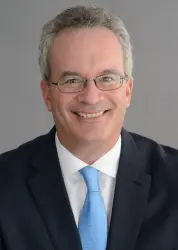
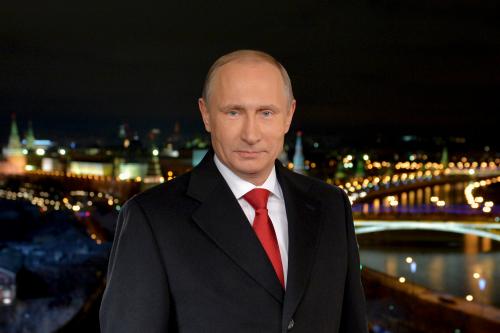
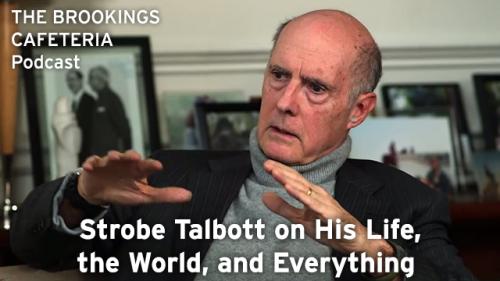
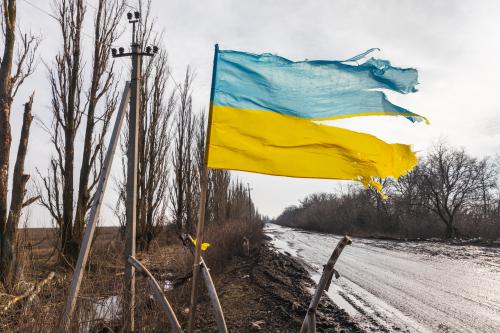
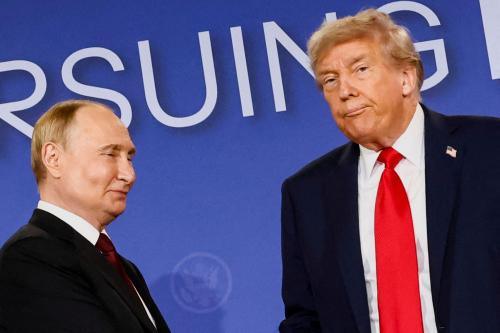
Commentary
Strobe Talbott’s diplomatic legacy
August 25, 2025